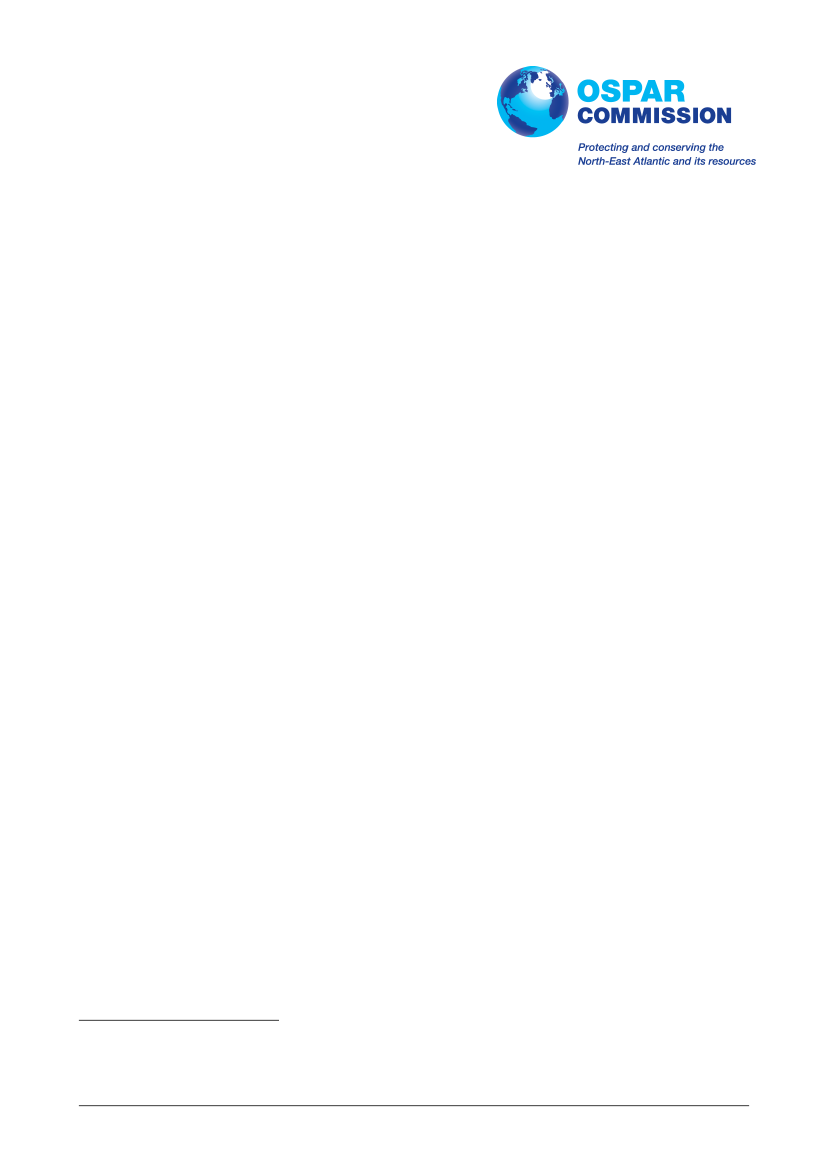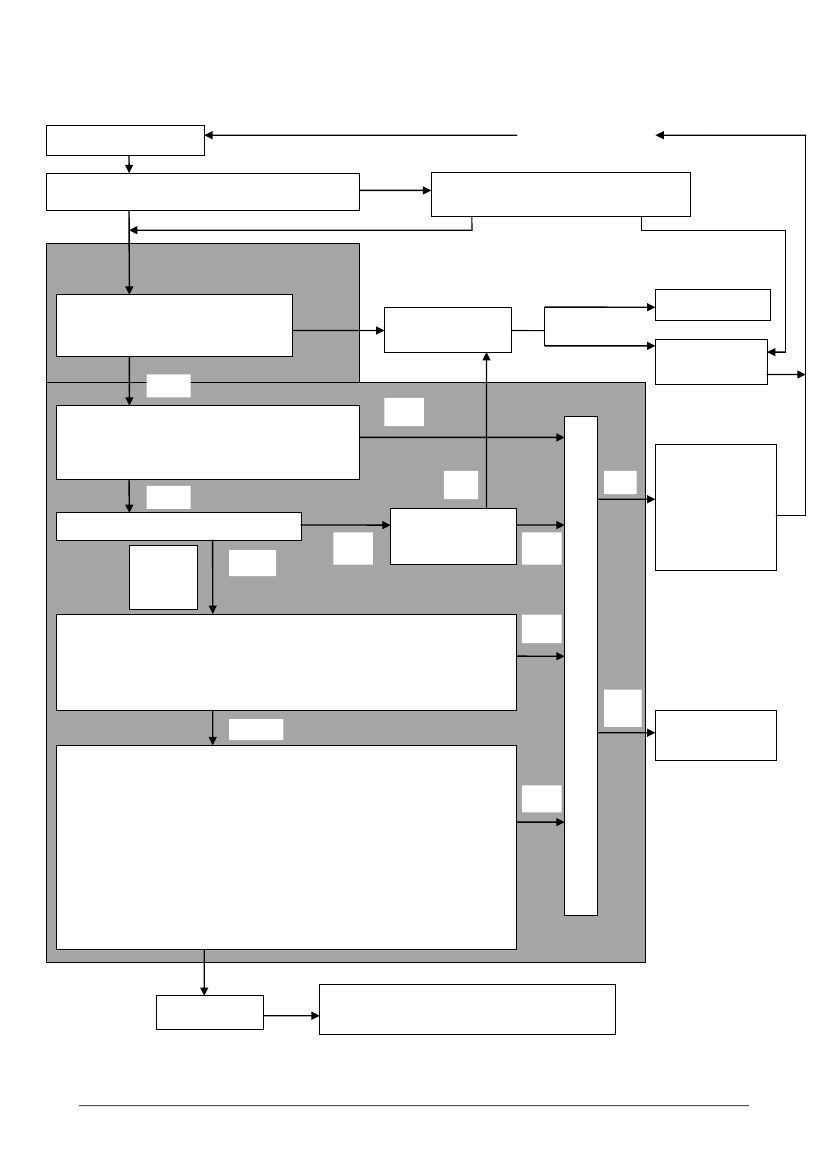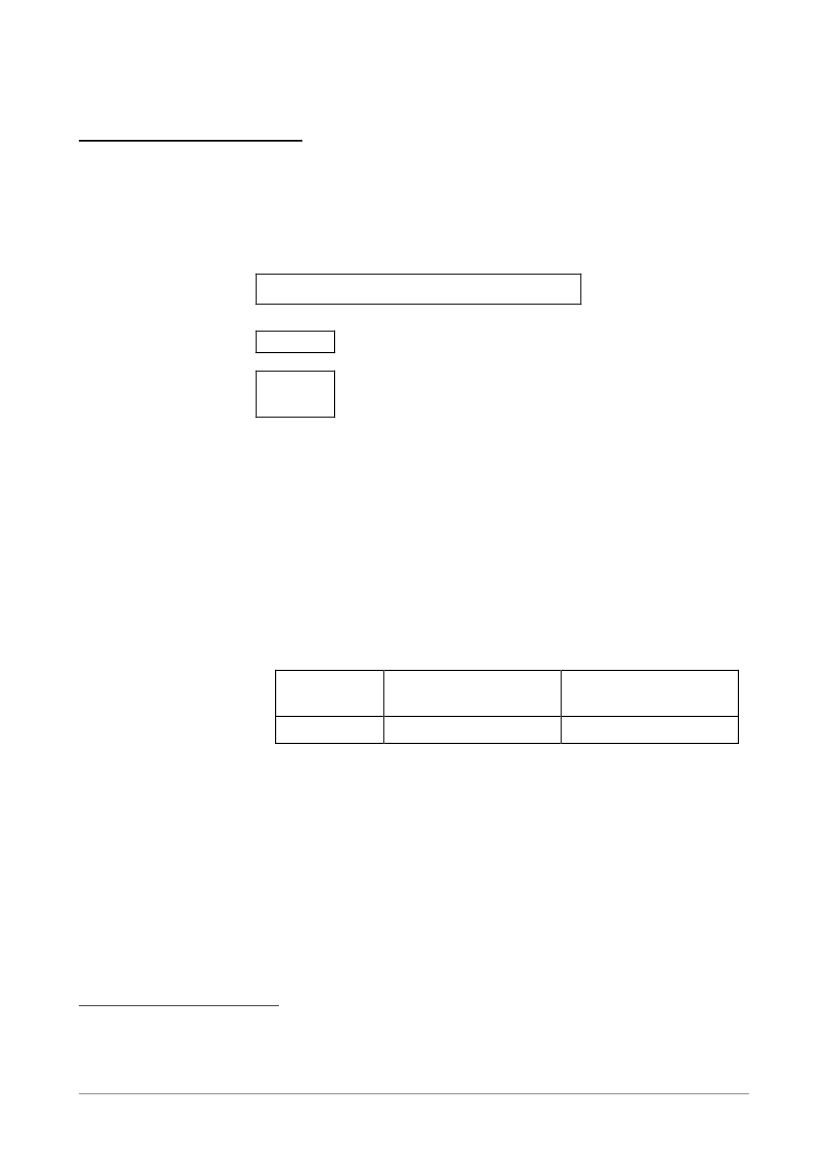Miljøudvalget 2011-12
MIU Alm.del
Offentligt
(OSPAR 10/23/1, Annex 10)
OSPAR Recommendation 2010/4 on a HarmonisedPre-screening Scheme for Offshore Chemicals1RECALLINGArticle 5 of the Convention for the Protection of the Marine Environment of the North EastAtlantic (“OSPAR Convention”) in which Contracting Parties agree to take jointly all possible steps to preventand eliminate pollution from offshore sources;RECALLINGArticle 4 to Annex III of the OSPAR Convention in which Contracting Parties agree that use on,or the discharge or emission from, offshore sources of substances which may reach and affect the maritimearea shall be strictly subject to authorisation or regulation by competent authorities of the Contracting Partiesand that the competent authorities shall provide for a system of monitoring and inspection;RECALLINGAppendix 1 to OSPAR Decision 2000/2 on a Harmonised Mandatory Control System for theUse and Discharge of Offshore Chemicals which stipulates that all offshore chemicals shall be subject to pre-screening, to enable authorities to assess whether the offshore chemical concerned should be subject topermission, substitution, temporary permission, or refusal of permission, and the experience gained in itsapplication;NOTINGOSPAR Recommendation 2005/2 on Environmental Goals for the Discharge by the OffshoreIndustry of Chemicals that Are, or Contain Added Substances, Listed in the OSPAR List of Chemicals forPriority Action and OSPAR Recommendation 2006/3 on Environmental Goals for the Discharge by theOffshore Industry of Chemicals that Are, or Which Contain Substances Identified as Candidates forSubstitution;RECALLINGthe Hazardous Substances Strategy and the OSPAR Commission’s strategic objective withregard to hazardous substances to prevent pollution of the OSPAR maritime area by continuously reducingdischarges, emissions and losses of hazardous substances, with the ultimate aim to achieve concentrationsin the marine environment near background values for naturally occurring substances and close to zero forman-made synthetic substances;RECALLINGthe OSPAR Offshore Oil and Gas Industry Strategy and the OSPAR Commission’s strategicobjective with regard to offshore oil and gas activities to prevent and eliminate pollution and take the necessarymeasures to protect OSPAR maritime area against the adverse effects of offshore activities by settingenvironmental goals and improving management mechanisms, so as to safeguard human health and toconserve marine ecosystems and, when practicable, restore marine areas which have been adversely affected;NOTINGthe relevant legislation within the European Union, in particular Regulation (EC) No 1907/2006 onthe Registration, Evaluation, Authorisation and Restriction of Chemicals (REACH) and correspondinglegislation of other Contracting Parties;
1
This Recommendation replaces OSPAR Recommendation 2000/4 as amended by OSPAR Recommendation2008/1.1 of 8
OSPAR Commission
Recommendation 2010/4
and as a consequenceDESIRINGto update the Harmonised Pre-screening Procedure for OffshoreChemicals.The Contracting Parties to the Convention for the Protection of the Marine Environment of the NorthEast Atlantic RECOMMEND:
1.1.1
DefinitionsFor the purpose of this Recommendation:a."authority" means the competent national authority of a Contracting Party to the OSPARConvention;"BCF" means the bioconcentration factor determined according to OECD 305 or ASTM E 1022guidelines;"CHARM" means the Chemical Hazard Assessment and Risk Management model developed byauthorities and offshore industry within the Convention area;"discharge" means the operational release of offshore chemicals or their degradation andtransformation products into the maritime area;"EC50" means the concentration of a test substance which results in a 50% response to theeffect measured by the test (e.g. reduction in either growth or growth rate relative to the control)within a defined period of exposure;"hazardoussubstances"means (in accordance with the OSPAR Hazardous SubstancesStrategy) substances which fall into one of the following categories:(i)(ii)substances or groups of substances that are toxic, persistent and liable to bioaccumulate;other substances or groups of substances which are assessed by the Commission asrequiring a similar approach as substances referred to in (i), even if they do not meet allthe criteria for toxicity, persistence and bioaccumulation, but which give rise to anequivalent level of concern.This category will include both substances which work synergistically with othersubstances to generate such concern, and also substances which do not themselvesjustify inclusion but which degrade or transform into substances referred to in (i) orsubstances which require a similar approach.The Commission will identify and assess such other substances or groups of substances usingavailable information and internationally accepted methods and criteria;g.h."HOCNF" means the Harmonised Offshore Chemical Notification Format;"LC50" means the median lethal concentration, i.e. that concentration of the test substance whichkills 50% of a test batch of organisms within a defined period of exposure;"offshorechemicals"means all chemicals intentionally used in connection with offshoreexploration and production activities in the maritime area. Offshore chemicals comprise bothsubstances and preparations;“OSPAR Decision 2000/2”means OSPAR Decision 2000/2 on a Harmonised Mandatory ControlSystem for the Use and Reduction of the Discharge of Offshore Chemicals;“OSPAR LCPA”means the OSPAR List of Chemicals for Priority Action;2 of 8Recommendation 2010/4
b.
c.
d.
e.
f.
i.
j.
k.
OSPAR Commission
l.m.
“OSPAR LSPC”means the OSPAR List of Substances of Possible Concern;“OSPAR Recommendation 2000/4”means OSPAR Recommendation 2000/4 on a HarmonisedPre-Screening Scheme for Offshore Chemicals, as amended by OSPAR Recommendation2008/1;"PLONOR" means the OSPAR List of Substances/Preparations Used and Discharged Offshore,which are considered to pose Little or No Risk to the Environment;"Pow" is equivalent to Kowand means the partition coefficient of a substance between N-octanol andwater, measured or calculated according to the HOCNF Guidelines;"preparation" means a mixture or solution composed of two or more substances;"Pre-screening" is the first part of the overall regulatory process which requires information onbioaccumulation potential, biodegradation, and acute toxicity of substances and preparationsand may use expert judgement;“REACH”means Regulation (EC) No 1907/2006 of the European Parliament and of the Council of18 December 2006 concerning the Registration, Evaluation, Authorisation and Restriction ofChemicals (REACH), establishing a European Chemicals Agency, amending Directive 1999/45/ECand repealing Council Regulation (EEC) No 793/93 and Commission Regulation (EC) No 1488/94as well as Council Directive 76/769/EEC and Commission Directives 91/155/EEC, 93/67/EEC,93/104/EC and 2000/21/EC (Official Journal of the European Union 30.12.2006 L396/1);"substance" means a chemical element and its compounds in the natural state or obtained byany manufacturing process, including any additive necessary to preserve its stability and anyimpurity deriving from the process used, but excluding any solvent which may be separatedwithout affecting the stability of the substance or changing its composition;"surfactant" means any substance, which has surface-active properties according to testmethod A.5 in Regulation EC 440/2008 laying down test methods pursuant to REACH, andwhich consists of one or more hydrophilic and one or more hydrophobic groups of such a natureand size that is capable of reducing the surface tension of water, and of forming spreading oradsorption monolayers at the water-air interface, and of forming emulsions and/ormicroemulsions and/or micelles, and of adsorption at water-solid interfaces."use" means application of any offshore chemical in connection with offshore exploration andproduction activities in the maritime area that might result in a discharge.
n.
o
p.q.
r.
s.
t.
u.
2.
Purpose and Scope
2.1 The purpose of pre-screening is to allow authorities to identify substances intended to be used oralready used as, or in, offshore chemicals with the aim of:a.b.substituting, and ultimately phasing out, those substances which are hazardous;regulating and controlling the other substances, where necessary.
2.2 The pre-screening scheme set out in this Recommendation should guide Contracting Parties whenimplementing a harmonised mandatory control system for the introduction, use and discharge of offshorechemicals as required in the programmes and measures set out in OSPAR Decision 2000/2.2.3 This Recommendation applies to offshore chemicals intended to be used or already used and/ordischarged as a result of offshore activities.3 of 8OSPAR CommissionRecommendation 2010/4
3.
Programmes and measures
3.1 When regulating the use and discharge of offshore chemicals, Contracting Parties should apply andfollow the harmonised pre-screening scheme at Appendix 1. Relevant Contracting Parties should comply withREACH for the purpose of this Recommendation.3.2An offshore chemical should be substituted if:a.b.c.d.it is on the OSPAR LCPA; orit is on the OSPAR LSPC; orit is on Annex XIV or XVII to REACH; orit is considered by the authority, to which the application has been made, to be of equivalentconcern for the marine environment as the substances covered by the previous sub-paragraphs; orit is inorganic and has a LC50or EC50less than 1 mg/l; orit has an ultimate biodegradation (mineralization) ofless than 20% in OECD 306, Marine BODIS or any other accepted marine protocols; orless than 20% in 28 days in freshwater (OECD 301 and 310); org.half-life values derived from simulation tests submitted under REACH (EC 1907/2006) aregreater than 60 and 180 days in marine water and sediment respectively (e.g. OECD 308, 309conducted with marine water and sediment as appropriate); orit meets two of the following three criteria:(i)biodegradation: less than 60% in 28 days (OECD 306 or any other OSPAR-acceptedmarine protocol); or in the absence of valid results for such tests:less than 60% (OECD 301B, 301C, 301D, 301F, Freshwater BODIS); orless than 70% (OECD 301A, 301E);(ii)bioaccumulation: BCF > 100 or log Pow3 and molecular weight <700; or if theconclusion of a weight of evidence judgement under Appendix 3 of OSPAR Agreement2008-5 is negative; ortoxicity: LC50< 10mg/l or EC50< 10mg/l; if toxicity values <10 mg/l are derived from limittests to fish, actual fish LC50data should be submitted;2
e.f.
h.
(iii)
and a less hazardous (or preferably non-hazardous) substitute is available.
4.
Entry into Force
4.1 This Recommendation has effect from 1 January 2011 and should be reviewed and, if necessary, revisedin 2014.
2
Details about the relevant methods for testing are given in the OSPAR Guidelines for Completing theHarmonised Offshore Chemical Notification Format (HOCNF).
4 of 8OSPAR CommissionRecommendation 2010/4
4.2
Upon taking effect this Recommendation supersedes OSPAR Recommendation 2000/4.
5.
Implementation Reports
5.1 Reports on the implementation of this Recommendation should be submitted to the appropriateOSPAR subsidiary body in accordance with the timing of the implementation reporting on OSPAR Decision2000/2.5.2 When reporting on the implementation of this Recommendation, the implementation format given inAppendix 2 should be used.
5 of 8OSPAR CommissionRecommendation 2010/4
Appendix 1The Harmonised Pre-Screening Scheme (shaded) as Part of the Whole Harmonised MandatoryControl System for Offshore Substances set out in the applicable OSPAR DecisionDevelop new productyes
START
Is the substance subject to the requirements ofREACH EC 1907/2006?noDoes it meet pre-registration orregistration requirements of REACH?yesno
yesIs substance covered by:1. The OSPAR PLONOR list?2. REACH (EC 1907/2006) Annex IV?3. Reach (EC 1907/2006) Annex V?
A. PermissionyesExpert judgementpositive?*no
D. Refusal ofpermission
noIs the substance on the OSPAR List of Chemicals forPriority Action (LCPA), the List of Substances ofPossible Concern (LSPC), Annex XIV or XVII to REACH(EC 1907/2006), or is it of equivalent concern for themarine environment as those substances?noIs the substance inorganic?yesIs LC50 or EC50< 1 mg/l?yesyes
no
no
C. TemporaryPermissionorD. Refusal ofPermission ****
Is
FullHOCNFneeded
no
substItute
Is ultimate biodegradation (mineralisation) of the substance <20% in OECD 306, MarineBODIS or any other accepted marine protocols, or <20% in 28 days in freshwater(OECD 301 and 310) orAre the half-life values derived from simulation tests submitted under REACH (EC1907/2006) greater than 60 and 180 days in marine water and sediment respectively(e.g. OECD 308, 309 conducted with marine water and sediment as appropriate)?noDoes the substance meet 2 of the 3 following criteria?Biodegradation<60 % in 28 days in OECD 306, Marine BODIS or any other acceptable marineprotocols, or in the absence of valid results for such tests (<60 % in 28 days(OECD 301B, 301C, 301D, 301F, 310, Freshwater BODIS) or<70% in 28 days (OECD 301A, 301E),] orBioaccumulationBCF >100 or log Pow3** and molecular weight <700, orIf the conclusion of a weight of evidence expert judgement under Appendix 3 ofOSPAR Agreement 2008-5 is negative; orToxicity: LC50< 10mg/l or EC50< 10mg/l; if toxicity values <10 mg/l are derived fromlimit tests to fish, actual fish LC50data should be submitted***.
yes
a va i l a b l e ?yes
yes
B.Substitution****
no
Management decision based on theoutcome of the ranking
6 of 8OSPAR CommissionRecommendation 2010/4
Appendix 1The Harmonised Pre-Screening Scheme (shaded) as Part of the Whole Harmonised MandatoryControl System for Offshore Substances set out in the applicable OSPAR Decision
Explanatory notes:
*
In accordance with the precautionary principle, expert judgement on a PLONOR/Annex IV/Annex Vsubstance should take into account sensitive areas, where the discharge of certain amounts of thesubstance may have unacceptable effects on the receiving environment, or any relevant REACHrestrictionsThe figure3means the result of an OECD 107 test or the highest reported log Powfrom the range ofvalues in an OECD 117 test.For further guidance on fish toxicity testing, please refer to OSPAR Guidelines for Completing theHOCNFCHARM may be used as a decision supporting tool + expert judgement
*********
7 of 8OSPAR CommissionRecommendation 2010/4
Appendix 2
Implementation Report Format
The format below for the implementation report on implementation of OSPAR
Recommendation 2010/4 on a Harmonised Pre-screening Scheme for Offshore Chemicals
should be used to the extent possible.
Reservation applies
Is measure applicable
in your country?
yes/no*yes/no *
If not applicable, then state why not (e.g. no relevant installation or activity)
by legislationyes/no*
by administrative actionyes/no*
by negotiatedagreementyes/no*
Please provide information on:
a.b.c.d.specific measures taken to give effect to this measure;any special difficulties encountered, such as practical or legal problems, in theimplementation of this measure;the reasons for not having fully implemented this measure should be spelt out clearly andplans for full implementation should be reported;if appropriate, progress towards being able to lift the reservation.*
Delete whichever is not appropriate
8 of 8OSPAR CommissionRecommendation 2010/4








